Lamenting the extenuating circumstances that push soldiers to kill or get killed, ‘The Pacific’ features the alarming distress of a battlefield. The HBO drama series is developed as a companion to the 2001 miniseries ‘Band of Brothers.’ Just as the latter focuses on the harrowing conditions that envelop the Marine Corps in the Pacific Theater of Operations within the wider Pacific War, this war series also narrows in on the events surrounding the campaign. In lieu of highlighting the corps of soldiers, ‘The Pacific’ zeroes in on the interweaving stories of three marines who belong to different regimes in the 1st Division.
Released in 2010, the miniseries is produced by Steven Spielberg, Tom Hanks, and Gary Goetzman. From portraying the abject horrors of the battlefield to signifying the psyche of the marines who must go to extreme lengths to vanquish the other side, the World War II series pieces several vital themes together. Naturally, fans have wondered if the realistic elements have a true story behind them.
The Pacific is Rooted in War Veterans’ Written Accounts
Awakening the grim and downbeat maelstrom of war and fighting, the show features a ferocity unlike any other. It chronicles the brutal island-hopping campaign against the Japanese regiments spread across the sweltering jungles of Guadalcanal to the undulated valleys of Okinawa. Penned by writers Bruce C. McKenna, Robert Schenkkan, Graham Yost, George Pelecanos, Laurence Andries, and Michelle Ashford, the series maps the blood-soaked campaign undertaken in the Pacific Theater of Operations during the Pacific War in World War II. The story finds its genesis in the penned accounts of war veterans, two of whom become the show’s principal characters.
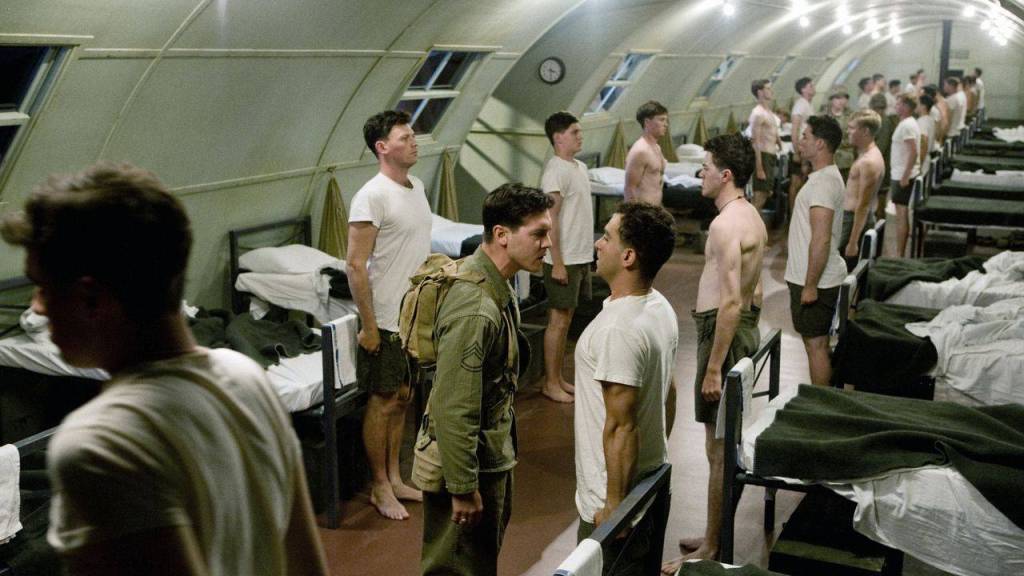
Albeit its dreary representation of death and loss, the Pacific campaign finds its humane elements in three Marines: Eugene Sledge, Robert Leckie, and John Basilone. Despite the inherent differences that set the three apart, the three ordinary men are bound together by extraordinary circumstances. The creators have sourced their inspiration for the show’s realistic setting from four memoirs, namely, ‘Helmet for My Pillow: From Parris Island to the Pacific’ by Robert Leckie, ‘Red Blood, Black Sand: Fighting Alongside John Basilone from Boot Camp to Iwo Jima’ by Chuck Tatum, and finally Eugene B. Sledge’s ‘With the Old Breed: At Peleliu and Okinawa’ and ‘China Marine: An Infantrymen’s Life After World War II.’
Created in companionship with HBO’s ‘Band of Brothers,’ ‘The Pacific’ narrows down the events that the 1st Marine Division encountered on the ground. However, despite sourcing inspiration from true events, the series has remarkably relegated the amount of violence and desecration of human worth that came to pass during the Pacific campaign. For example, the story holds back on the immense gore of “souvenir-hunting.” In one narrative documented in Eugene Sledge and Robert Leckie’s memoirs, the act of pulling gold teeth and looting corpses for weapons and flags had become extremely rampant.
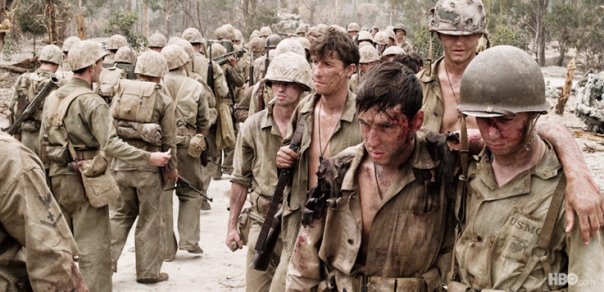
Unmoved by the horrors of corpses and dead bodies, the soldiers would encounter the posthumous violation of dead Marines. From body parts cut and stuffed into the mouths of the dead soldiers to performing sadistic activities on the departed bodies of Japanese soldiers, the extremities witnessed on-ground have been left out of the series due to their intensity. Other aspects of the war series also seem fictional, such as John Basilone’s reenlistment into the Marine Corps. However, the surprising element remains factually correct. The veteran had received his Medal of Honor for heroism in the extenuating conditions of Guadalcanal. However, the reality was quite different from John Basilone’s actual experiences.
Unlike the events depicted in the series, John Basilone landed on Guadalcanal with the 7th Marines, where a 3000 Japanese Sendai Division regiment attacked his unit. In the next two days, John Basilone was left alone with two other Marines. With critically low ammunition and no supplies, the veteran retrieved a heavy machine gun from enemy lines and maintained fire on the Japanese for almost 24 hours non-stop. By the third day, he had managed to eviscerate the Japanese forces almost singlehandedly, earning him the Medal of Honor in October 1942.
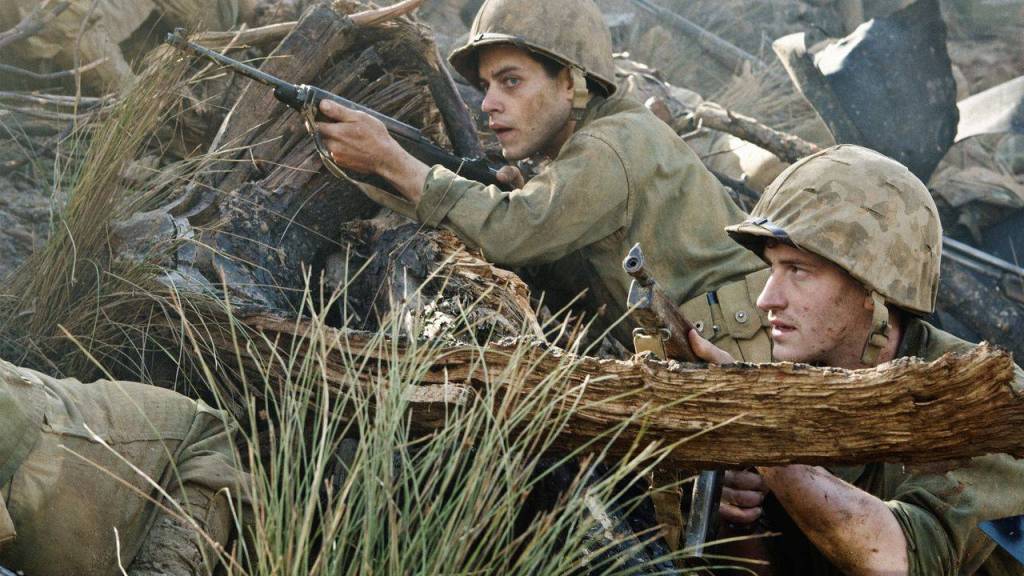
The decorated officer had returned to America in 1943 and eventually embarked on war bond tours, attending parades and getting interviewed. Interestingly, his time in the public eye made him realize that the battlefield is his home and that he wishes to rejoin the men of his company at Iwo Jima. While the war veteran was initially denied and offered an instructor position in the country itself, he ultimately made a second request and was reenlisted in time to fight with his original company.
Likewise, the most heartbreaking moment in the series follows when he returns to Iwo Jima and encounters a heroic ending on Red Beach II. Unlike its televised counterpart, Basilone’s death had come a little differently. The war hero had singlehandedly saved the Marine tanks of the 27th regiment trapped in the enemy minefield. He had guided the tanks out of the minefield and enabled them to get to the edge of Airfield Number 1. In the midst of this, he was killed by mortal shrapnel, giving the ultimate sacrifice in the Pacific. So, even though the vivacity of the battlefield and the unerring emotional turmoil have been lauded for their tonal accuracies, the creators have still taken liberties to accentuate the storyline.
War veterans have noticed these inaccuracies, such as the reported testimony shared by Lt. Col. Dean Ladd. The decorated veteran had pointed out the same in a since-deleted YouTube video. Having served in the 2nd Marine Division on Guadalcanal, Tarawa, Saipan, and Tinian, the late officer had held that the storyline was inaccurate. In his memoir, ‘Faithful Warriors: A Combat Marine Remembers the Pacific War,’ Colonel Ladd had penned a detailed account of the offshore fight at Guadalcanal, where soldiers could see shells going back and forth and fire between the ships. While he deemed the series a marvelous success, he also pointed out that soldiers would never yell on the battlefield.
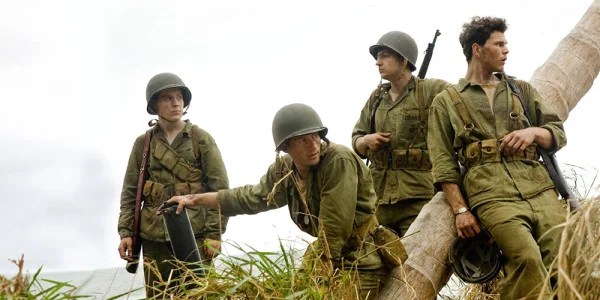
Nevertheless, the series has deeply resonated with countless people who experienced the events unfold first-hand. Veteran Bill Gallo has also expressed how the depiction of the battlefield took him back. In a piece written for NY Daily News, the former soldier stated that the elements of war were so accurately depicted that his focus was darted back to his green combat boots and M-1 Garand rifle he used at the time. Therefore, the creators have tried to embody the accurate details that unfolded in the Pacific region more than 75 years ago. While the makers of the show have taken creative liberties to embellish the storyline, it stands to reason that the story is rife with events of yore.
Read More: Best World War II Movies

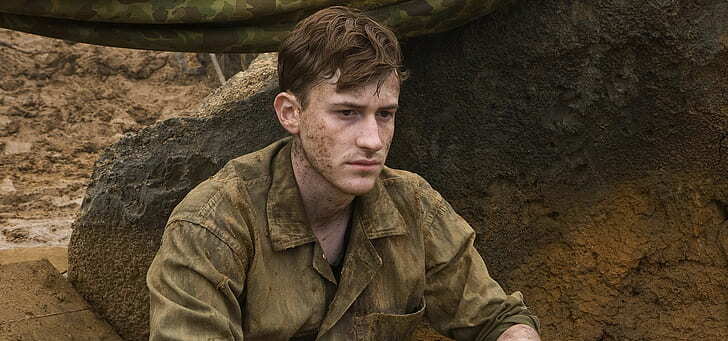
You must be logged in to post a comment.